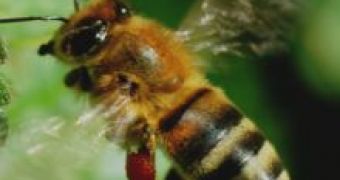Although I have to admit I wasn't aware of the existence of a dilemma regarding the bees' flight, it seems that for more than 70 years, researchers have been puzzled by these insects' way of flying.
In 1934, in fact, French entomologist August Magnan and his assistant Andr? Sainte-Lague calculated that bee flight was aerodynamically impossible.
With the help of digital photography and a giant robotic mock-up of a bee wing, a team of researchers composed of Michael H. Dickinson, Abe M. Zarem Professor and Douglas L. Altshuler of Caltech and Nevada University have discovered how bees manage to fly.
According to the Caltech press release, the secret of honeybee flight is the unconventional combination of short, choppy wing strokes, a rapid rotation of the wing as it flops over and reverses direction, and a very fast wing-beat frequency.
"We're no longer allowed to use this story about not understanding bee flight as an example of where science has failed, because it is just not true," Dickinson says.
"These animals are exploiting some of the most exotic flight mechanisms that are available to insects," he added.
Researchers are surprised by the extremely fast frequency bees are capable of, this normally being attributed to smaller insects.
This is because aerodynamic performance decreases with size, and so to compensate small animals have to flap their wings faster. For example, mosquitoes flap at a frequency of over 400 beats per second.
But speed is not all and the images have shown that their wings beat over a short arc of about 90 degrees, which is significantly smaller than that made by other flying insects.
What's even more surprising is that they manage to maintain the same frequency, 230, even when carrying pollen or nectar, the only difference being the dimension of the arc, which increases.

 14 DAY TRIAL //
14 DAY TRIAL //